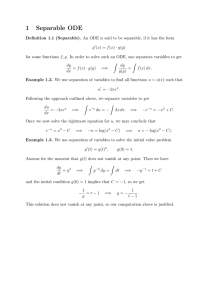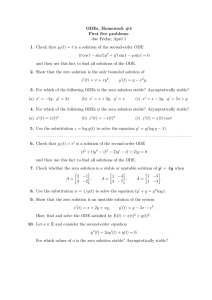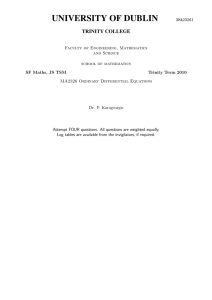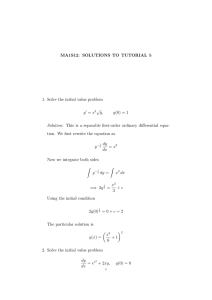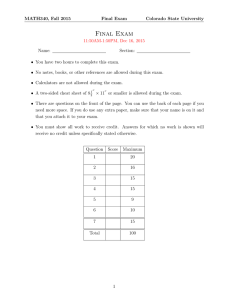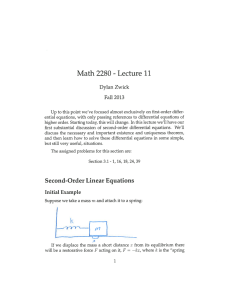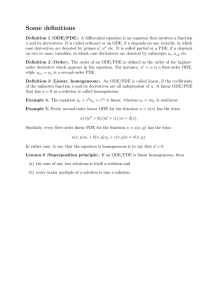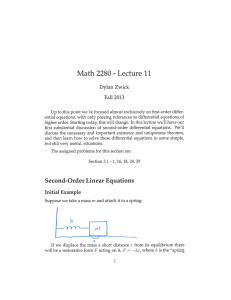Useful ODE facts
advertisement
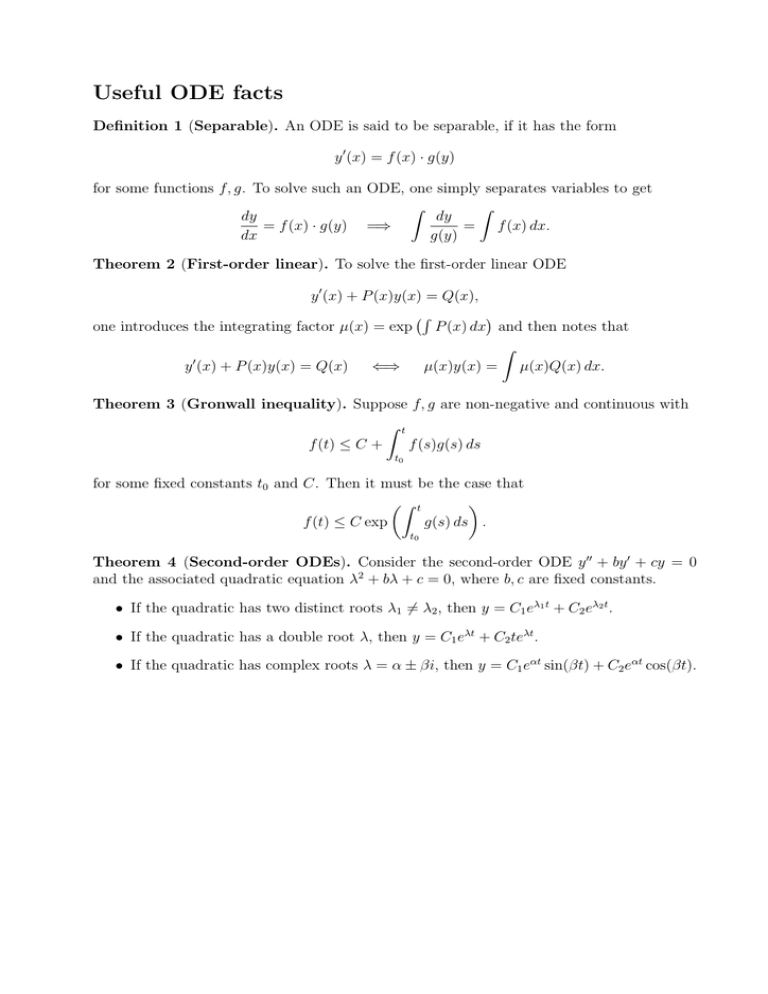
Useful ODE facts Definition 1 (Separable). An ODE is said to be separable, if it has the form y 0 (x) = f (x) · g(y) for some functions f, g. To solve such an ODE, one simply separates variables to get Z Z dy dy = f (x) · g(y) =⇒ = f (x) dx. dx g(y) Theorem 2 (First-order linear). To solve the first-order linear ODE y 0 (x) + P (x)y(x) = Q(x), ¡R ¢ one introduces the integrating factor µ(x) = exp P (x) dx and then notes that Z 0 y (x) + P (x)y(x) = Q(x) ⇐⇒ µ(x)y(x) = µ(x)Q(x) dx. Theorem 3 (Gronwall inequality). Suppose f, g are non-negative and continuous with Z t f (t) ≤ C + f (s)g(s) ds t0 for some fixed constants t0 and C. Then it must be the case that µZ t ¶ f (t) ≤ C exp g(s) ds . t0 Theorem 4 (Second-order ODEs). Consider the second-order ODE y 00 + by 0 + cy = 0 and the associated quadratic equation λ2 + bλ + c = 0, where b, c are fixed constants. • If the quadratic has two distinct roots λ1 6= λ2 , then y = C1 eλ1 t + C2 eλ2 t . • If the quadratic has a double root λ, then y = C1 eλt + C2 teλt . • If the quadratic has complex roots λ = α ± βi, then y = C1 eαt sin(βt) + C2 eαt cos(βt).
